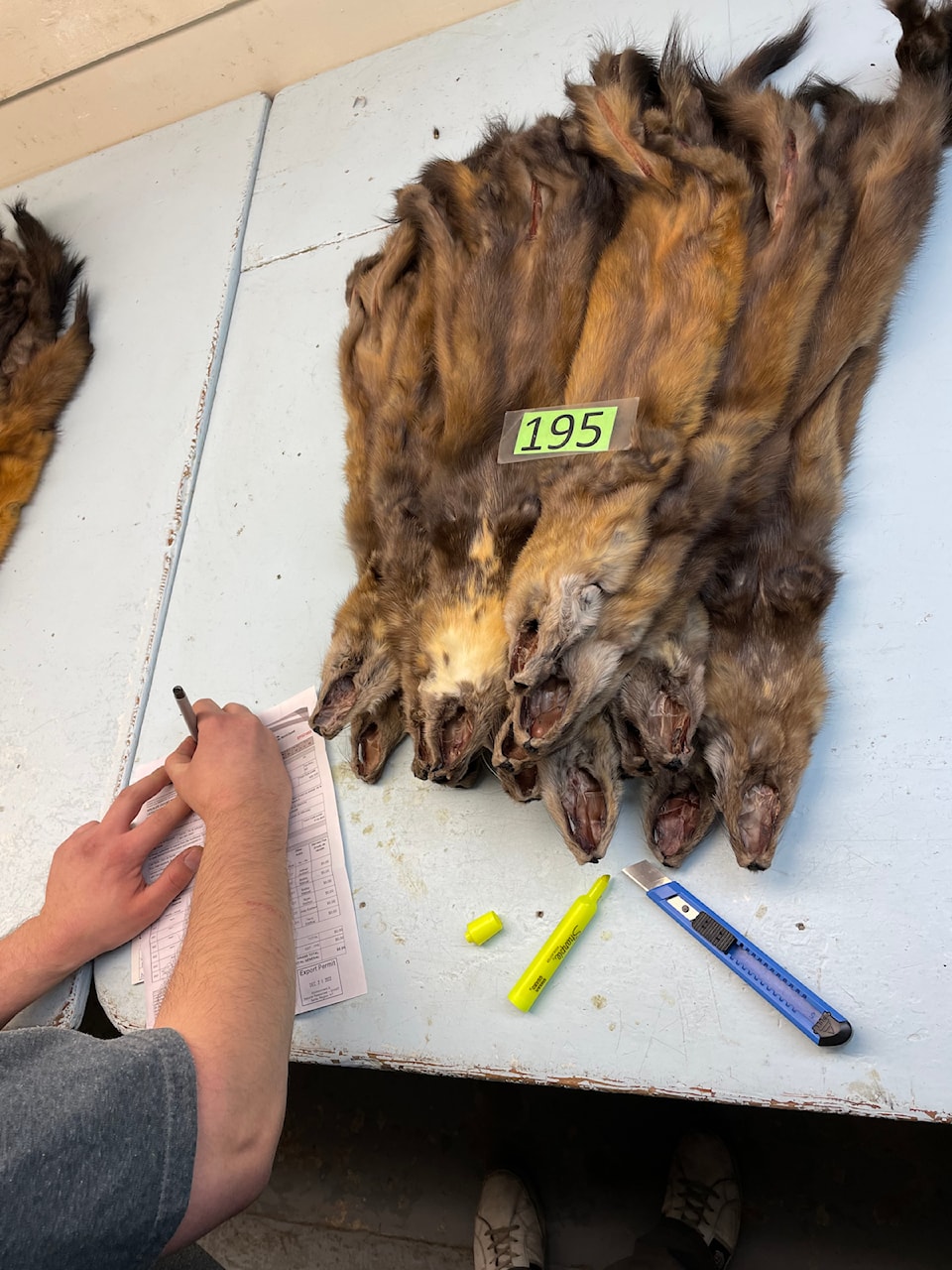There was a rebound in trapping in the Northwest Territories in 2023.
Harvesters turned in close to 21,400 pelts, which was a 118 per cent increase from 2022, according to the GNWT.
Forty of those pelts sold at auction for a combined value of $342,619.64, a 46 per cent increase from $235,000 in 2022.
Regionally, the Beaufort Delta led the way at $106,166. The North Slave was next at $77,508, then the South Slave at $69,099, the Sahtu at $61,819 and the Dehcho at $28,028.
There were 215 trappers who registered activity in 2022-23.
"Trapping is another growth sector that, while a small contributor to the overall NWT economy, is traditionally important to many NWT residents for food and clothing as well as incomes, especially in smaller communities... a resurgence in a traditional activity and could mean increased employment and incomes in communities outside Yellowknife," the GNWT stated in its Economic Review 2024-25.
In 2023-24, the GNWT's Hide and Fur Program generated $366,468.50 in raw material sales to NWT artists through in-person sales through regional fur distributors and at an artisan fur shop in Yellowknife, hosted by the Department of Industry, Tourism and Investment.
To help cultivate more trap-line activity, the GNWT held trapper training workshops that attracted a total of 121 participants in the South Slave and Dehcho regions in 2023.
Another dip in Nunavut
In Nunavut, the territorial government's fur assessment program paid $132,243.50 to harvesters in 2023, which was 29.6 per cent less than the $187,782.52 paid in 2022, and the latter figure was down 20.4 per cent from 2021.
The Government of Nunavut released its 2023-2028 Fisheries and Sealing Division Strategic Plan last year with an aim to boost the territory's sealing economy in addition to fisheries.
Auction results
At the Fur Harvesters Auction in North Bay, Ont., where Northern furs are often shipped, a pair of auctions in 2023 showed strong demand for beaver with pelts averaging around $39, a big increase from the average of closer to $14 in 2022.
Also experiencing firm prices were wolverine at close to $593 per pelt and Arctic wolves spiked to $438 in May after averaging $269 in March.
Muskrat, on the other hand, was not selling.
Fact file
Nunavut Fur Assessment Program advance payment to harvesters in 2023
Ring seal - 1,234/$91,805.50
Harp seal - 41/$3,033
Polar bear - 18/$8,500
Arctic fox - 378/$18,815.00
Red fox - 16/$900
Wolf - 20/$5,550
Wolverine - 15/$3,640
Grizzly bear - 0/$0
TOTAL: $132,243.50
Source: Government of Nunavut
Fact file
Sealing strategy
In its 2023-2028 Fisheries and Sealing Division Strategic Plan, the Government of Nunavut outlined the following action items:
-Create a Nunavut-wide sealing working group to help inform divisional policies and programs.
-Develop a list of sealing related resources and programs which can be provided in a plain language format to communities for distribution.
-Increase communication and awareness of division programs and funding related to sealing.
-Identify gaps in resources and programming related to sealing that could be filled by the division or other stakeholders.
-Develop an MOU and internal working group with the Department of Environment to ensure a collaborative approach to the review and delivery of sealing programming within the GN.
-Review and revise the Dressed Sealskin for Nunavummiut Program; incorporating feedback shared by Nunavummiut on ways to improve the quality of dressed and dyed skins provided by the program.
-Expand the Dressed Sealskin for Nunavummiut Program by including additional species of seals and providing support for the distribution of traditionally tanned skins.
-Working internally within EDT (Economic Development and Transportation) to ensure programs that support sealing are comprehensive and effective in meeting the needs of Nunavummiut.
-Collaborate with jurisdictions that have well-developed sealing industries to help inform the further development of Nunavut’s sealing industry (e.g. Greenland).
-Conduct a comprehensive environmental scan of similar community spaces that exist in other Inuit regions.
-Compile a list of funding options suitable for the creation of such community spaces.
-Conduct a feasibility study and environmental assessment to determine the economic demand and viability for a tannery in Nunavut.
-Conduct an environmental scan focused on tanneries operating in remote locations (e.g. Nunavik, Greenland).
-Continue to manage the seal-skin ban in the European Union and United Kingdom, and advocate for market access on behalf of Nunavut with international bodies.
-Develop advocacy points that are Nunavummiut driven. Continue collaboration with key stakeholders to provide a united voice on sealing issues and work towards finding marketing options that benefit Nunavummiut.
-Actively engage on federal policies and decisions that may affect Nunavut’s sealing sector, advocating for the inclusion of local population knowledge alongside contemporary data sets, as well as community consultation throughout the decision-making process.
-Work collaboratively with Greenland on shared advocacy priorities.
-Develop working relationships with other Inuit regions in Canada, Greenland, and the circumpolar world to learn best practices for harvesting, handling, and processing of skins.
-Develop and deliver an education and awareness campaign on best practices that produce the highest quality seal skins.
Source: Government of Nunavut
